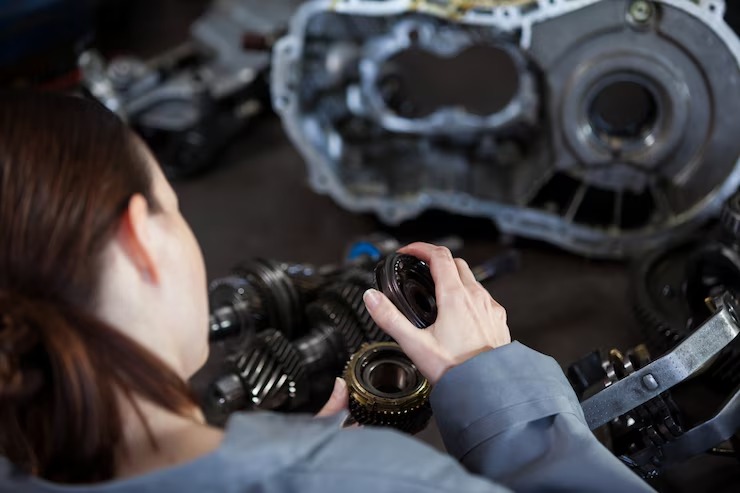Volvo has long stood as a symbol of durability, safety, and forward-thinking automotive engineering. Known for producing vehicles that can last hundreds of thousands of miles with proper care, Volvo cars offer an exceptional ownership experience. However, as with any high-performance vehicle, longevity and reliability are directly tied to how well the engine is maintained. Whether you’re driving a Volvo XC90, S60, or V60, proactive engine care can save you from costly repairs and unexpected breakdowns. For personalized support and authentic parts, searching for Volvo dealers near me is always a great first step in your maintenance journey. Now, let’s dive into the top engine maintenance tips for Volvo owners.
Understand Your Volvo’s Engine Specifications
Before diving into maintenance routines, it’s essential to understand the specific engine your Volvo uses. From turbocharged four-cylinder engines in modern models to older five- and six-cylinder powertrains, each type comes with unique requirements. Knowing your engine’s oil capacity, fuel type, and cooling system specifications helps you tailor a more accurate maintenance strategy. Always refer to your Volvo’s owner manual or consult with a certified technician to get familiar with your vehicle’s needs.
Keep Up with Oil Changes
Oil is the lifeblood of your engine, and clean, high-quality oil is vital for keeping internal components lubricated and running smoothly. Volvo engines, especially newer models with turbochargers, demand synthetic oil that meets precise standards. Neglecting regular oil changes can lead to sludge build-up, reduced efficiency, and even engine failure. As a general rule, Volvo recommends oil changes every 7,500 to 10,000 miles or at least once a year, whichever comes first. However, if you frequently drive in extreme temperatures or tow heavy loads, more frequent oil changes may be necessary.
Monitor and Maintain Coolant Levels
Your Volvo’s engine generates a significant amount of heat during operation, making the cooling system crucial to overall health. Coolant prevents overheating and protects engine components from thermal stress. Always ensure the coolant is topped off to the recommended level and that it meets Volvo’s specifications. Check for signs of coolant leaks under the car or around the radiator cap and hoses. A low coolant level or contaminated fluid can lead to overheating and serious engine damage.
Replace the Timing Belt or Chain on Schedule
Timing belts and chains are integral to engine operation, controlling the movement of valves and pistons. While many modern Volvos use timing chains that are designed to last the life of the engine, older models may still rely on timing belts that need replacement. Typically, a timing belt should be replaced between 60,000 and 100,000 miles. Failure to do so can result in catastrophic engine damage. Always check your owner’s manual or speak with a Volvo-certified mechanic to determine your model’s specific interval.
Keep the Air Filter Clean
An engine air filter ensures that clean air enters the combustion chamber, contributing to efficient fuel burn and optimal performance. Over time, the air filter can become clogged with dirt and debris, restricting airflow and reducing power and fuel efficiency. Inspect your Volvo’s air filter every 12,000 to 15,000 miles, or more frequently if you drive in dusty or polluted environments. Replacing a dirty air filter is a quick, affordable task that can make a noticeable difference in how your engine performs.
Use Quality Fuel and Additives Wisely
The fuel you use directly affects your Volvo’s engine health. Always opt for high-quality gasoline from reputable stations. Many Volvo engines, particularly those with turbochargers, perform best on premium fuel. Additionally, fuel system cleaners or additives approved by Volvo can help prevent deposit build-up in the injectors and combustion chambers. Avoid overusing additives, and never use products not specifically recommended for your vehicle.
Watch for Engine Warning Signs
Modern Volvos are equipped with sophisticated onboard diagnostic systems that monitor engine performance and alert you to issues through warning lights. If the check engine light comes on, don’t ignore it. Common causes include faulty oxygen sensors, misfiring cylinders, or issues with the catalytic converter. Early diagnosis and intervention can prevent minor issues from becoming major repairs. Have the vehicle scanned for error codes at a service center to identify and resolve problems promptly.
Maintain Proper Tire Pressure and Alignment
While tire pressure and alignment might seem unrelated to engine maintenance, they play an indirect but important role. Improper tire inflation or misalignment can increase the load on your engine, forcing it to work harder and consume more fuel. This can accelerate wear and tear on engine components. Check your tire pressure monthly and ensure it matches the values recommended by Volvo. Regular wheel alignments will also help reduce unnecessary strain on the drivetrain.
Inspect Belts and Hoses
Belts and hoses may seem like minor parts, but they play critical roles in engine function. The serpentine belt powers multiple systems, including the alternator, water pump, and air conditioning. Cracks, fraying, or squealing noises are signs that a belt may be failing. Similarly, radiator and vacuum hoses should be checked for swelling, leaks, or brittleness. Replacing worn belts and hoses before they fail can prevent breakdowns and engine overheating.
Keep the Battery in Check
A healthy battery ensures your engine starts reliably and powers all electronic systems. Battery-related issues can strain your alternator and potentially affect engine sensors and ECU performance. Check the battery terminals for corrosion and ensure a secure connection. Volvo recommends testing your battery annually, especially before winter when cold temperatures can significantly reduce battery performance.
Schedule Regular Engine Diagnostics
Even if everything seems fine on the surface, routine diagnostics using specialized Volvo diagnostic tools can uncover hidden issues. These checks assess the performance of sensors, the fuel system, emission controls, and more. A certified Volvo technician can analyze the data and recommend preemptive maintenance or repairs before a small issue snowballs into a bigger problem. Including diagnostics as part of your regular maintenance schedule is a smart long-term investment.
Rely on Volvo-Certified Mechanics
While independent shops may offer attractive prices, nothing beats the peace of mind that comes with Volvo-certified service. Certified mechanics have the training, tools, and access to genuine parts designed specifically for your model. They’re also up to date on the latest service bulletins and recall information. If you’re ever unsure where to find qualified help, a quick search for Volvo dealers can connect you to trusted service providers in your area.
Conclusion
Caring for your Volvo’s engine is not just about following a checklist—it’s about preserving the integrity and performance of a premium vehicle designed to last. From regular oil changes and coolant checks to monitoring belts and using the right fuel, every small action contributes to your engine’s longevity. Leveraging the expertise of Volvo-certified technicians ensures your vehicle receives the care it truly deserves. Whether you’re a long-time Volvo owner or new to the brand, these engine maintenance tips can help you enjoy a smooth, reliable ride for many years to come. Don’t forget, for top-tier assistance and authentic parts.



































